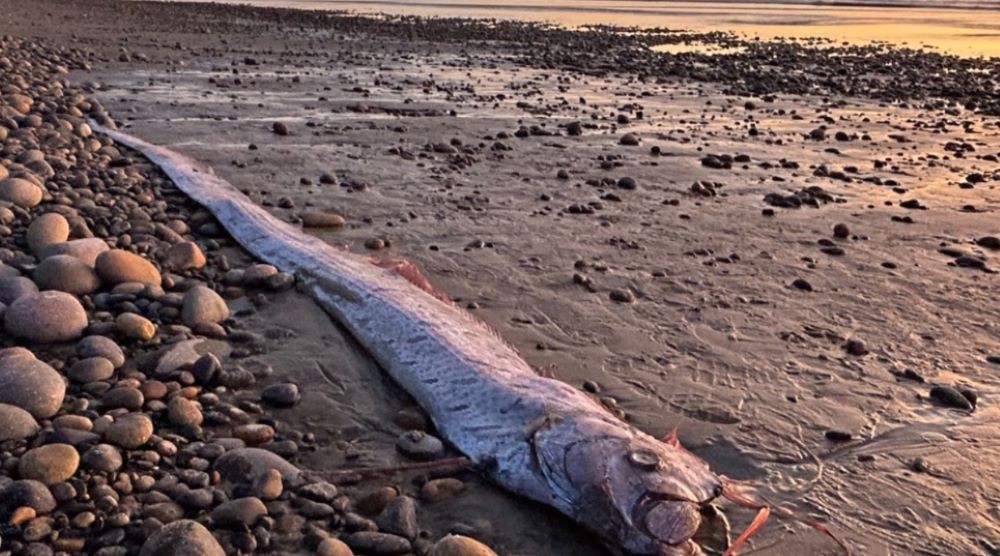The mysterious “Doomsday Fish”: Oarfish sightings and Earthquake myths in California
Known as the "Doomsday Fish," the oarfish is steeped in folklore, with many believing its appearance is a warning of natural disasters like earthquakes or tsunamis. But is there any truth to these ominous predictions?
 |
| According to Southern California’s Scripps Institution of Oceanography, an associate of the center recently discovered the specimen along the rocky coast, north of San Diego, near Encinitas. |
What Is an Oarfish?
The oarfish (Regalecus glesne) holds the title of the world's longest bony fish. Its striking features and mysterious nature make it a source of awe and superstition:
- Length: Can grow up to 56 feet (17 meters), though most are shorter.
- Weight: Typically around 600 pounds (272 kilograms).
- Appearance: Ribbon-like body with silvery scales and vivid red, crown-like dorsal fins.
- Habitat: Found in deep ocean waters between 660 and 3,300 feet, far from human eyes
Why Is It Called the “Doomsday Fish”?
The nickname comes from ancient legends, particularly in Japan. Known locally as "Ryugu no tsukai" (the “Messenger from the Sea God’s Palace”), oarfish sightings are believed to precede earthquakes or tsunamis. This belief gained attention after multiple oarfish were found stranded along Japan’s coasts before the 2011 Tōhoku earthquake and tsunami, which caused catastrophic damage and loss of life
While these stories are compelling, scientists remain skeptical. There is no concrete evidence that oarfish behavior correlates with seismic activity. The deep ocean habitats of oarfish overlap with tectonic plate zones, but their strandings are more likely due to natural illness, pollution, or injury.
 |
| Another "doomsday fish" has made an unexpected appearance along the beaches of California. |
2024 California Sightings
In October 2024, a giant oarfish was found near La Jolla Cove, creating headlines and reigniting old fears. Social media users speculated about impending disasters, with some referencing the Tōhoku earthquake. However, experts emphasize that these events are coincidental rather than predictive
What Causes Oarfish to Appear?Scientists offer logical explanations for oarfish strandings:
- Illness or Injury: Weak or dying oarfish may drift to the surface, unable to navigate back to deep waters.
- Environmental Disturbances: Changes in ocean temperature, pollution, or currents could force these creatures into unfamiliar territory.
- Natural Death: Like all marine life, oarfish are susceptible to age-related deaths, which may lead them closer to shore.
Despite their size, oarfish remain elusive and are rarely seen alive. This makes every stranding a unique opportunity for marine research.
A Fascinating but Misunderstood Creature
While the oarfish’s appearance often sparks fear and dramatic predictions, it is more a reminder of the mysteries lurking in the deep sea. It also highlights the fragility of marine ecosystems and the need to protect these habitats.
For those interested in learning more, experts recommend relying on scientific sources rather than folklore. Understanding these rare creatures can replace fear with fascination and appreciation for the world beneath the waves.






























